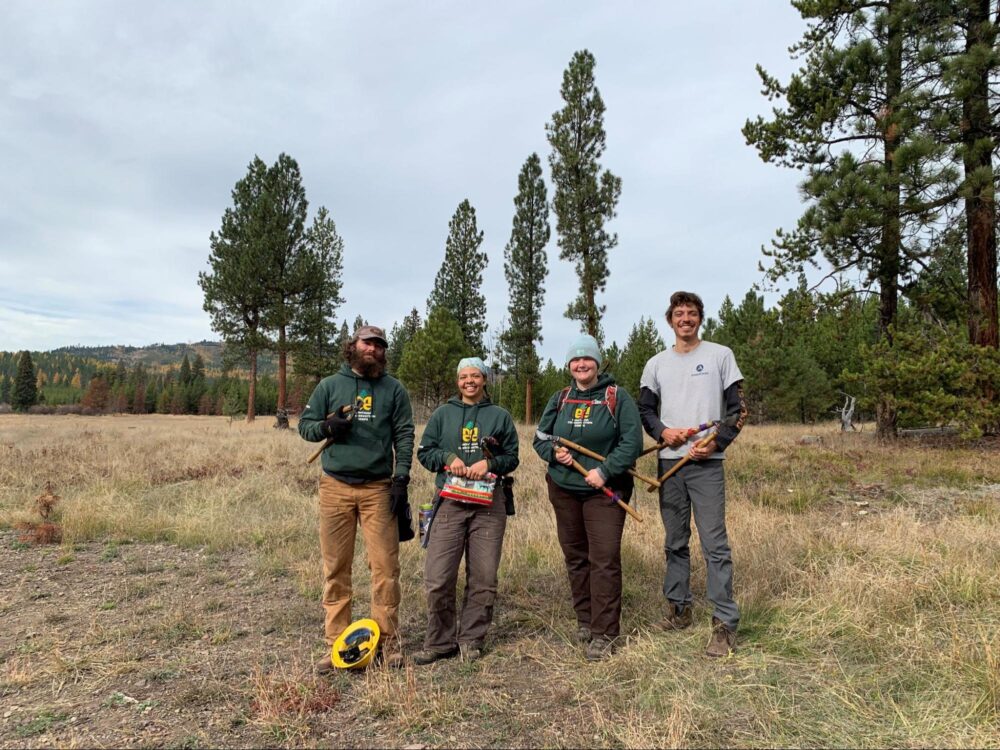We have much more to do and your continued support is needed now more than ever.
Chasing Clean Fuel in the Lab
The idea of an efficient, clean-burning, sustainable fuel that could power everything from cars to commercial skyscrapers is a seductive one. Currently, many world-class research labs and over 200 small companies are racing to overcome technical barriers and make it a reality.
One researcher in particular, Jonathan Meuser, a doctoral candidate at the Colorado School of Mines, is working on improving hydrogen production from algae, a technology that is still in development but is often lauded for its enormous potential. Not only does the algae use a photobiological process to turn water directly into oxygen and hydrogen-which can be burned or used to make electricity via a fuel cell-but the algae biomass could then also be used for other biofuels, carbon-neutral materials, or organic fertilizer.

Meuser has worked on several aspects of algae-based biofuel, including the adaptation of technology developed at the National Renewable Energy Lab to make algae hydrogen testing kits for mass distribution, known as the “Lunchbox Laboratory”, and a DIY algae bioreactor. Currently, his primary research interest is the natural biodiversity of the many useful products that algae can produce, like oils and hydrogen. While researching this unexplored biodiversity, his major goal is the development or discovery of an alga able to produce hydrogen without disruption by oxygen, a likely requirement for the commercialization of photosynthesis-powered hydrogen production. He graciously offered to answer a few of our questions.
XH: So tell me what you’re working on.
Meuser: The great thing about algae is that there’s just so much we still don’t know. It is estimated that about 300,000 distinct species exist, but we’re not sure even of that. Many of these have ancient well-specialized traits resulting from millions of years of adaptation, yet we know little more about many of them than what they look like. Is hydrogen production restricted to some or scattered throughout all green algae? Which strains produce the most and how are they different? We now know the proteins required to make the hydrogen, while the regulation of genes involved and the flow of energy are only two of many unknowns. Oxygen inactivates all known hydrogen-producing proteins in green algae so far. The Holy Grail would be to find an unknown alga that makes hydrogen in the presence of oxygen, and there’s no reason to think there isn’t one out there.
XH: How are you going to test that many varieties?
Meuser: Physically, I can’t — not without the development of some high throughput technology. That’s why Futurefarmers created the Lunchbox Laboratory — to get students all over the country engaged in real experiments, while directing researchers to algae with desirable traits. My advisors at NREL developed a chemochromic sensor that turns blue when exposed to hydrogen. I adapted this technology by coating the sensor material onto a glass stopper which can detect the hydrogen produced from algae grown in a test tube. Back in San Francisco, the rest of the Futurefarmers team custom built the box which can vary light and darkness for testing the algae. Ideally students would order several algae from culture collections to test, figure out if any produce hydrogen, and then report the results online. Really, there are enough strains out there to allow anyone to get involved. Our project was a prototype, but we’re still hoping someone comes along who’d like to fund it and get students working on it. (Ed. Note: These labs have been displayed at the Museum of Modern Art-an online version of the show is here.
XH: Tell me about the specific strain of algae you’re using right now.
Meuser: Chlamydomonas is the green algae that I and others study the most. It’s a good variety to study because its metabolism is so flexible. It adapts quickly to the change from photosynthesis to fermentation and its entire genome has been sequenced and is available online. Usually we research by a process called reverse-genetics: these aren’t machines we can take apart, so instead we make random genetic disruptions, or mutations, and study the effect. Because we have the genome available, we can easily find what we’ve disrupted and try to infer why it caused the effect. The chemochromic sensors are useful in finding mutants specifically affected in hydrogen production.
XH: Why does oxygen disrupt hydrogen production?
Meuser: Hydrogen production comes from photosynthesis, but the challenge is that photosynthesis also stops hydrogen formation, because it produces oxygen, and the hydrogenase enzyme that that makes hydrogen can’t function in the presence of oxygen. The oxygen essentially rusts the iron in the center of the protein, breaking it. So the algae make hydrogen only for a short period. However, some bacteria make hydrogen with proteins that use nickel and iron, and some of these can handle much more oxygen. So far, these nickel-iron hydrogenases have not been found in green algae.
XH: Why is it that the algae can’t currently produce hydrogen in large quantities?
Meuser: Dr. Melis at UC-Berkeley published a study in 2000 in collaboration with NREL researchers showing that depriving Chlamydomonas of sulfur can allow the algae to sustain hydrogen production in the light. Basically, it hampers photosynthesis just enough that the algae produces less oxygen than it consumes in the light, allowing it to make hydrogen for days at a time. However, this works because photosynthesis has been minimized and the yields are still about 3-4 times less than is estimated we need for commercialization. This is still very encouraging because many of the plants we use for food naturally produced ten times less in usable foodstuffs before we figured out intensive breeding, artificial selection, and advanced farming techniques.
XH: I’ve read that algae can also accumulate oils that be converted to biodiesel or other types of biofuel.
Meuser: Yes, it’s very exciting, this idea of the direct conversion of solar light to fuel, in both oil and hydrogen form. With corn grain ethanol, the crop grows all season only to yield a few ears of seeds, and so much is lost in unused biomass. This doesn’t happen with algae. Every single cell produces the product you want. The second thing is that algae grow at an extraordinary rate. It’s like a 2 foot corn plant on Monday growing fast enough to reach 32 feet tall by the weekend.
XH: Wouldn’t that be a very water-intensive process? Especially considering how these organisms need sunlight, and places with the most sunlight tend to have the lowest amounts of fresh water.

Meuser: It is important that biofuels don’t continue to take resources away from food production or destroy natural habitat, especially rainforest. We imagine that the water and nutrients used to grow the algae may be recovered and reused in closed reactor systems. Many researchers, including those in our lab, have also begun to study algae from saline environments. If saltwater could be used, fuel production could be linked to desalination to get a net pure water result. I am also interested in using algae cultivation to preserve ecosystems by sequestering nutrients in agricultural runoff that currently contributes to ocean dead zones. Algae do consume some water to make the hydrogen, but this water is created again when the hydrogen is used as fuel.
XH: Anything else you’d like to add?
Meuser: The potential of algae to turn carbon in the air and waste water sources into valuable products is enormous. However, we are in the infancy of this undertaking. The technical hurdles are immensely multidisciplinary. I believe the breakthroughs will come from incredible teams, rather than incredible individuals. We are very fortunate that funding is available again for this type of work. The most important thing for everyone to understand as we move towards a future of clean energy is that there is plenty of renewable energy available to provide for human need, even with available technology (like wind and solar). But if we don’t invest in the infrastructure to capture this energy before fossil fuels are depleted, we will all be left in the dark!




















